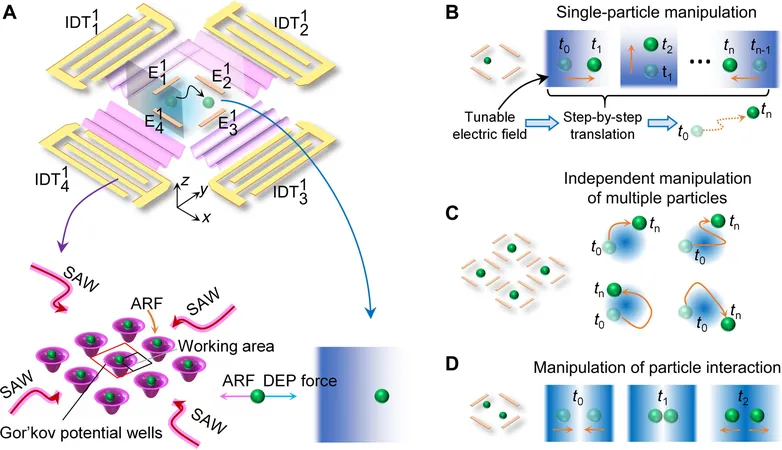
Revolutionary Tool Empowers Scientists to Manipulate Cells with No Contact - A Game Changer in Disease Research!
2024-09-19
Author: Wei
Revolutionary Tool Empowers Scientists to Manipulate Cells with No Contact - A Game Changer in Disease Research!
In groundbreaking research, a team led by Virginia Tech's Assistant Professor Zhenhua Tian has unveiled a pioneering tool that allows scientists to manipulate cells without any physical contact. This innovation is particularly crucial in fields like cancer research and virology, where studying resilient yet harmful pathogens, such as the coronavirus, demands utmost precision and care. Traditional methods that involve direct contact can compromise the integrity of these delicate organisms, but this new contactless approach promises to revolutionize the way we study and understand infectious diseases.
Published in the prestigious journal Science Advances, this innovative technique combines two forms of energy: acoustic waves and electric fields. Tian and his team developed a specialized microscopic device capable of capturing and controlling tiny particles, all while keeping them alive for an extended period. This major breakthrough could enhance diagnostic methods and improve treatments, ultimately aiding in disease prevention.
The Science Behind the Innovation: Acoustic Waves and Electric Fields Unite!
What sets this research apart is the unprecedented combination of acoustic energy and electric fields to manipulate microparticles. The device utilizes standing acoustic waves—ultrasound that travels along specially designed flat chips equipped with tiny emitters. These waves create an invisible landscape of energy patterns, likened to "mountains and valleys," through which microparticles are guided.
By layering two different frequencies of acoustic waves, overlapping patterns form grid-like structures known as acoustic wells. When particles enter these wells, they become trapped at the center, providing a stable environment for observation without the risk of damage. However, the innovation doesn’t stop there; the introduction of electric fields allows for greater control. By positioning microscopic electrodes, researchers can maneuver the particles, enabling independent movement within these wells, significantly expanding the scope of manipulation.
A Universe of Possibilities: Transforming the World of Microbiology!
The potential applications of this groundbreaking technique are staggering. With the ability to handle fragile materials, such as virus particles, researchers now have an unprecedented opportunity to better understand the behavior of these pathogens in real-time. Tian envisions a multitude of uses for this method that could pave the way for significant advancements in medical research, drug development, and even cellular therapy.
As researchers continue to explore the capabilities of this novel tool, the hope is that it can be leveraged to tackle various complex scientific challenges. The implications for future disease research and treatment are vast, making this contactless manipulation technique not only a first-of-its-kind but a possible catalyst for change in the landscape of healthcare and biological sciences.
Stay tuned as we follow this exciting development that could change the face of scientific research forever!



 Brasil (PT)
Brasil (PT)
 Canada (EN)
Canada (EN)
 Chile (ES)
Chile (ES)
 Česko (CS)
Česko (CS)
 대한민국 (KO)
대한민국 (KO)
 España (ES)
España (ES)
 France (FR)
France (FR)
 Hong Kong (EN)
Hong Kong (EN)
 Italia (IT)
Italia (IT)
 日本 (JA)
日本 (JA)
 Magyarország (HU)
Magyarország (HU)
 Norge (NO)
Norge (NO)
 Polska (PL)
Polska (PL)
 Schweiz (DE)
Schweiz (DE)
 Singapore (EN)
Singapore (EN)
 Sverige (SV)
Sverige (SV)
 Suomi (FI)
Suomi (FI)
 Türkiye (TR)
Türkiye (TR)
 الإمارات العربية المتحدة (AR)
الإمارات العربية المتحدة (AR)